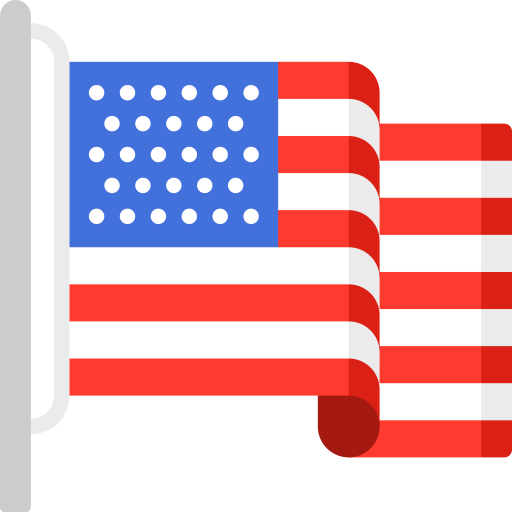Pick a language school or university and complete the enrollment application.

F-1 Visa


What Is the F-1 Visa? The F-1 visa allows international students to study full-time at U.S. language schools, colleges, and universities to achieve their academic goals.
Why Choose Otips for Your Study in the U.S.?
-
- Expert Guidance: We’ll help you select the right school and guide you through the entire application process.
-
- Simplified Process: From finding schools to submitting visa paperwork, we make it easy.
-
- Affordable Options: Access language schools, colleges, and universities with up to 70% scholarship.
-
- Seamless Support: Receive personalized assistance from your application to visa approval.
How It Works?
After acceptance, your school will issue the I-20 form for your F-1 visa application.
Submit the SEVIS I-901 form and pay the fee to activate your student record.
Fill out the DS-160 form, pay the visa fees, and schedule your interview.

Required Documents for an F-1 Visa Application
- Form I-20: Issued by your U.S. school upon acceptance.
- SEVIS Fee Receipt: Proof of payment for the SEVIS I-901 fee.
- DS-160 Confirmation Page: The completed online visa application form.
- Passport: Valid for at least six months beyond your planned stay in the U.S.
- Visa Photo: A recent photo meeting U.S. visa requirements.
- Financial Proof: Bank statements, affidavits of support, or scholarship letters showing you can cover tuition and living expenses.
- Ties to Home Country: Evidence of plans to return home after your studies, such as family ties or property.
F-1 Visa
Frequently Asked Questions (FAQ) About the F-1 Visa
The F-1 visa is a non-immigrant student visa that allows international students to study full-time at U.S. language schools, colleges, or universities.
To qualify for an F-1 visa, you must:
- Be enrolled in a full-time program at an SEVP-approved U.S. school.
- Demonstrate financial ability to cover tuition and living expenses.
- Prove ties to your home country, indicating you intend to return after completing your studies.
You can study for the duration of your academic program as specified on your I-20 form. After completing your program, you have a 60-day grace period to prepare for departure, transfer schools, or change your visa status.
The Form I-20 is an official document issued by your U.S. SEVP-certified school that confirms the following:
- Your admission to a full-time academic or language program.
- Your eligibility to apply for an F-1 visa.
SEVIS (Student and Exchange Visitor Information System) is a system used by the U.S. government to track international students. You must pay the SEVIS I-901 fee to activate your record before applying for an F-1 visa.
How do I apply for an F-1 visa?
Follow these simple steps to apply for an F-1 visa:
- Apply and Be Accepted by a U.S. SEVP-Accredited School.
- Receive your I-20 form from the school.
- Pay the SEVIS I-901 fee. FMJfee.com.
- Complete the DS-160 visa application form.
- Schedule and attend your visa interview at a U.S. embassy or consulate.
You’ll need:
- Form I-20 issued by your U.S. school.
- SEVIS fee receipt.
- DS-160 confirmation page.
- A valid passport (at least six months beyond your stay).
- A visa-compliant photo.
- Financial proof (bank statements, affidavits, scholarships).
- Academic documents (transcripts, diplomas, test scores).
- Evidence of ties to your home country.
Processing times vary by embassy or consulate but typically range from a few weeks to a few months. Apply as early as possible after receiving your I-20.
If denied, the consular officer will provide the reason. You can reapply after addressing the issues in the denial.
What financial proof is required for an F-1 visa?
To obtain an F-1 visa, you must demonstrate sufficient funds to cover tuition and living expenses for at least the first year of your study program (or the entire duration for shorter programs, such as language training). Accepted forms of financial proof include:
- Bank statements.
- Scholarship or grant letters.
- Affidavits of support (e.g., Form I-134 for U.S.-based sponsors).
Yes, but with restrictions:
- On-campus employment is allowed for up to 20 hours per week during school sessions.
- Off-campus employment requires authorization, such as CPT (Curricular Practical Training) or OPT (Optional Practical Training).
Can I transfer schools while on an F-1 visa?
Yes, you can transfer to another SEVP-approved school. You must inform your current school and obtain a new I-20 from the new institution.
Yes, but you must notify your Designated School Official (DSO) and obtain an updated I-20 form.
Falling below full-time enrollment without prior approval from your designated school official (DSO) can result in the violation of your F-1 visa status. This may lead to the termination of your SEVIS record, jeopardizing your ability to remain in the United States.
What happens after I complete my program?
After completing your program, you have a 60-day grace period to:
- Prepare for departure.
- Transfer to another school.
- Apply for Optional Practical Training (OPT) if eligible.
OPT (Optional Practical Training) allows F-1 students to work in their field of study for up to 12 months after graduation. STEM students may be eligible for a 24-month extension.
Your visa expiration date is different from your status. If your I-20 is valid and you maintain F-1 status, you can remain in the U.S.
Can my family join me on an F-1 visa?
Yes, your spouse and children under 21 can apply for F-2 visas. However, they cannot work or study without separate authorization.
F-2 spouses cannot work, but they can study part-time. F-2 children can attend school at the K-12 level.
Yes, you can travel, but you must have:
- A valid passport and F-1 visa.
- A valid I-20 form with a travel signature from your DSO.
Violating your F-1 visa status—such as working without authorization or not maintaining full-time enrollment—can have serious consequences, including:
- Termination of Your SEVIS Record: Your status in the U.S. will no longer be valid.
- Loss of Legal Stay: You may be required to leave the U.S. immediately.
- Reinstatement Requirements: To restore your status, you must either:
- Apply for reinstatement while remaining in the U.S. (subject to strict criteria).
- Leave the U.S. and apply for a new visa to return.
Yes, you can request a program extension through your DSO if your studies require more time than originally planned.


